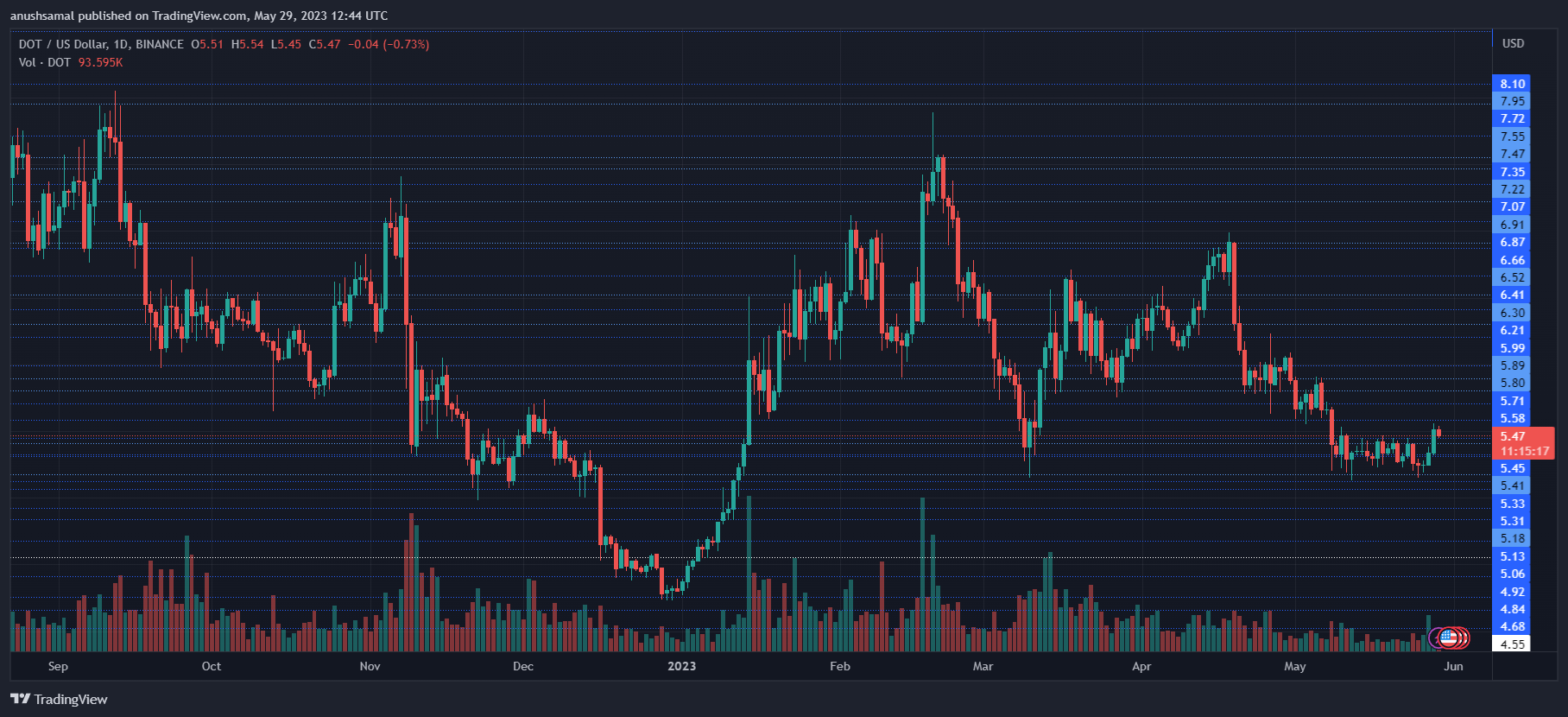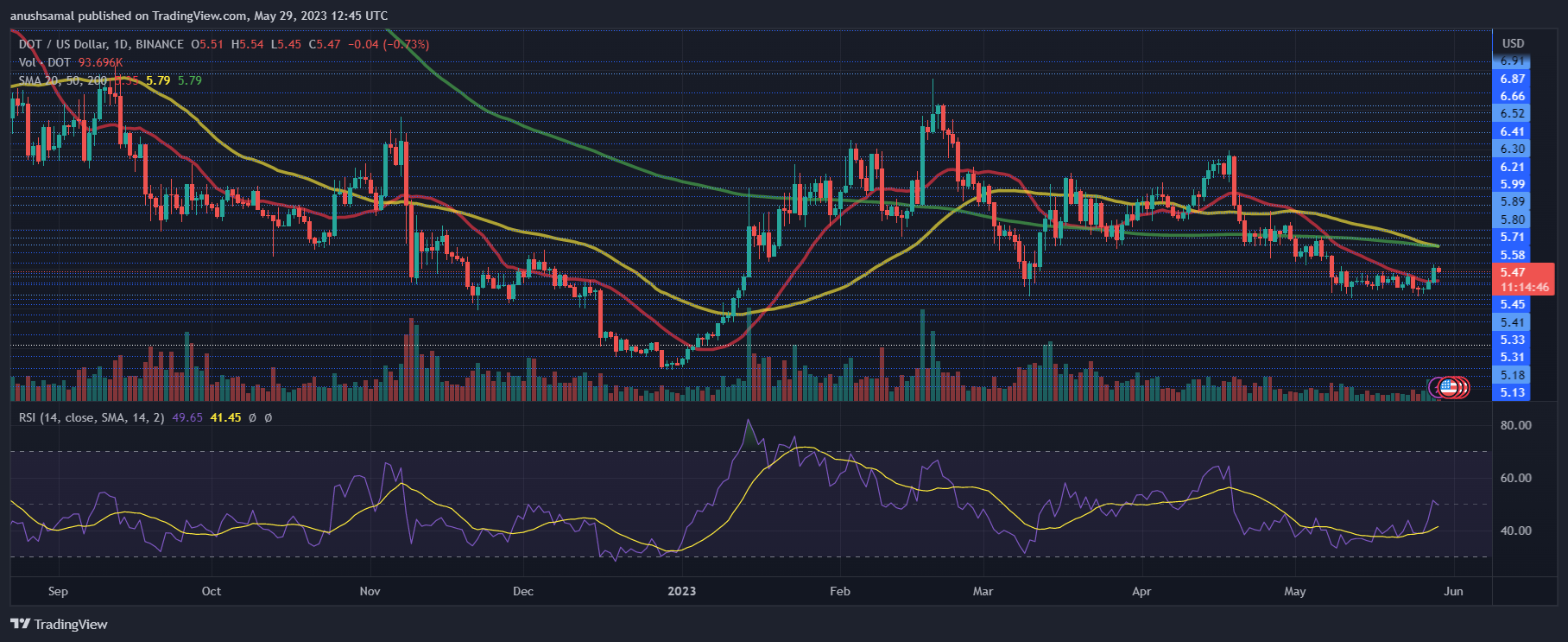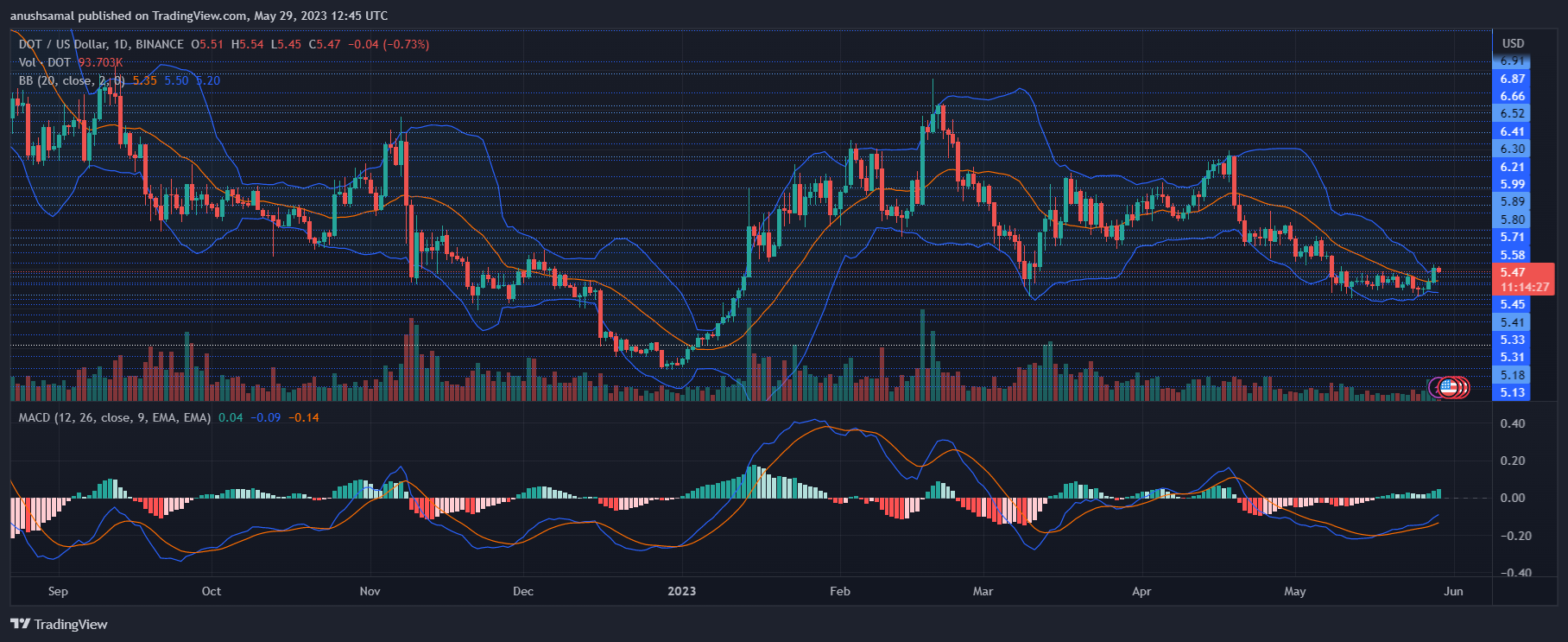Yesterday, Polkadot (DOT) reached its weekly high at $5.54, but then entered a corrective phase. Over the past 24 hours, DOT has managed to maintain 1.8% of its total profits over that period. On the weekly chart, DOT showed a 3% price increase.
However, technical analysis suggests that bears currently have the upper hand, while purchasing power and demand remain low. Nevertheless, if Bitcoin continues its upward movement towards the $28,000 level, several altcoins including DOT could also experience positive price action.
On the other hand, if sellers dominate, DOT could break below its crucial support level, reinforcing bearish sentiment in the coming trading sessions. The fall in the DOT market capitalization further indicates the prevailing low purchasing power at the moment.
Polkadot Price Analysis: One Day Chart

At the time of writing, DOT was trading at $5.47. After a rejection at the $5.54 level, the altcoin has experienced a retracement on its chart.
Overhead resistance for DOT is currently positioned at $5.58. If the altcoin manages to surpass this resistance level, it could potentially reach $5.80. Despite the price correction, DOT has so far maintained a position above the crucial $5.40 support level.
However, if sellers gain momentum, the price could drop below the vital $5.40 support level and trade around $5.30. DOT’s trading volume in the previous session was bearish, indicating a drop in demand as a result of the bears on the daily chart.
Technical analysis

Throughout the month of May, DOT experienced minimal demand on the chart. While the Relative Strength Index (RSI) initially showed signs of recovery, the depreciation of DOT led to a decline in demand.
This suggests that purchasing power did not enter the positive zone. In addition, the DOT price moved below the 20-Simple Moving Average (SMA) line, indicating that sellers have been driving price momentum in the market.
If there is a slight increase in demand during the upcoming trading sessions, DOT may try to trade above the 20-SMA line, giving the bulls a chance to regain control of the price.

Although the demand for Polkadot has decreased, the chart still shows buy signals, indicating a possible price increase. These buy signals are accompanied by an increase in demand, pointing to a positive outlook.
The Moving Average Convergence Divergence (MACD) indicator, which displays price momentum and trend changes, shows green histograms linked to buy signals.
In addition, the Bollinger Bands, which measure price volatility and fluctuation, have narrowed, suggesting that Polkadot may experience significant volatility in the coming trading sessions.
Featured image from UnSplash, charts from TradingView.com

